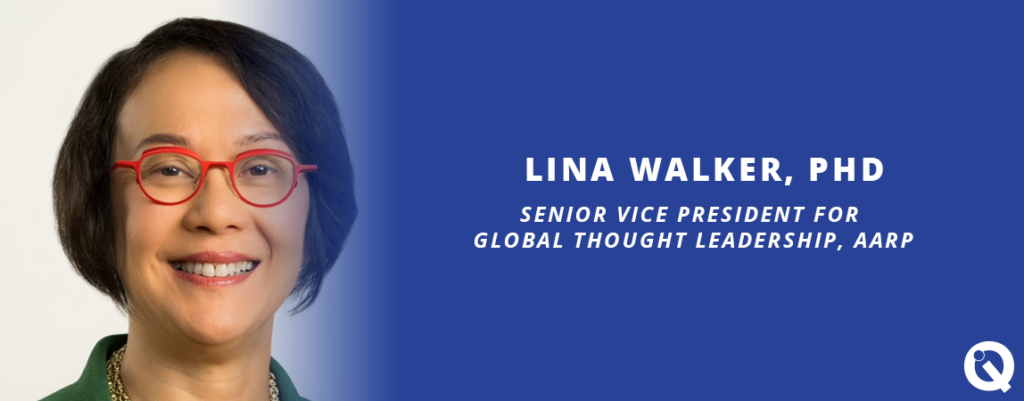Lina Walker, PhD, Senior Vice President for Global Thought Leadership at AARP. Dr. Walker will be the keynote speaker of the Quality Institute’s Winter Conference, A Framework for Health Aging in New Jersey.
As an economist, what demographic shift in the next 30 years will be most significant?
Birth rates are falling, and people are living longer. That’s happening all around the world. The combination means that countries are aging — and if they are not now, they will be very soon.
Globally, one in four adults is over 50. By 2050, the number would be one in three. The shift in the United States is more pronounced. In 2020, about 36% of the population in the United States is over 50. In 30 years, the percent will be around 40 percent. It really is something to celebrate because we’ve made gains that enable people in the United States and around the world to live longer lives. But it also means that we need to rethink work, how we live, how we interact with others. Everything’s got to change.
What do you see as the most concerning implications of that demographic shift?
When people hear the statistics, they fixate on the doom and gloom part of the story. We’ve all heard stories about the silver tsunami. It will create a burden for retirement systems and for health systems. I think we need to look beyond the negative and see that there are positives that come with global longevity. For instance, many people are not aware that older adults are key drivers of the economy. Fifty cents of every dollar are spent by the 50-plus. In 30 years, 59 cents of every dollar will come from the 50-plus. The 50-plus are punching above their weight. The 50-plus demographic is 36% of the population, but they contribute 46% to the GDP. The 50-plus account for 54% of volunteer hours in the United States. AARP has partnered with the World Economic Forum, the OECD, and businesses to encourage an age inclusive workforce because a multi-generational workforce can be just as productive and will be imperative for sustainable growth.
What does our aging population in New Jersey mean for our state’s health care workforce and health care needs?
There is more demand for health care at the same time the workforce is getting older. The Health Resources & Services Administration (HRSA) projected that by 2035 there would be a shortage in geriatricians and other practitioners, such as primary care. There won’t be enough supply to meet the demand. There isn’t a simple answer to addressing that challenge — and maybe that means doing things differently. New Jersey I feel is on that path of thinking more wholistically to support an aging community. New Jersey is an age-friendly state and there are 22 towns and counties in New Jersey that are part of the age-friendly network. And one of the key ingredients behind being age-friendly is planning. That includes planning to support healthy aging. Keeping people healthier longer, as they age, will mean less need for intensive medical services. Healthy aging could mean older people are able to volunteer and mentor and contribute to their community longer. Additionally, there’s opportunity to create an environment where workers might be able to work longer, have more flexible work options, upskill, or reskill, or phase in retirement.
Can you provide a hint of what we can expect from your keynote — and what industries and professionals you think most need to hear what you have to say?
I would say everyone needs to hear this information. AARP International conducts a learning journey every two years to understand how other countries are innovating to support their aging community. I’m going to try to pull examples from around the world during my remarks of how different places support a multi-generational workforce and other ways to prepare for the future. The U.S. is different. But these concrete examples could allow people to envision what can be done — and what’s being done elsewhere.
Finally, we like to ask a question beyond a person’s professional work. Can you tell us who your favorite New Jersey artist is, i.e., singer, writer, actor?
I would say the artists who created the New Jersey Botanical Gardens. There are parts of New Jersey that are incredibly beautiful, and I consider this to be one of them.

